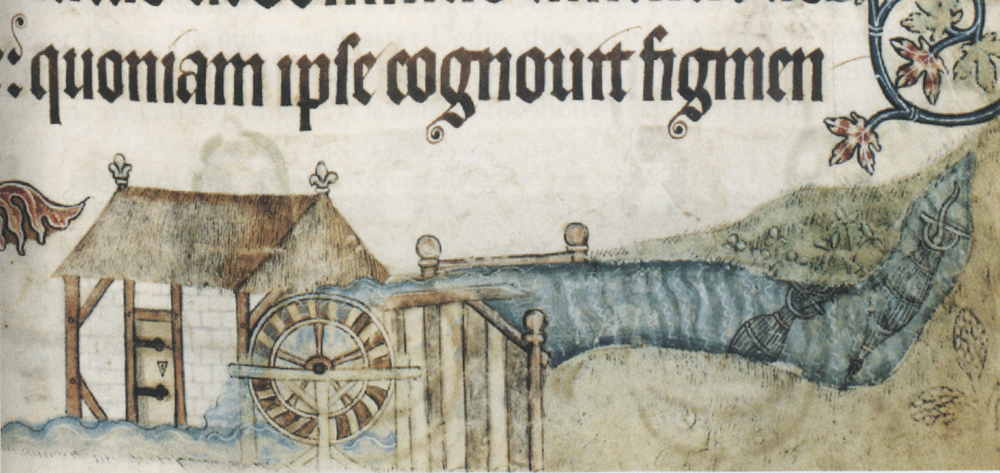New research: Water landscapes on the River Thames from the Middle Ages until the 19th century…
English rivers do not just flow. From Roman times and onwards they were highly contentious water landscapes used by a mixture of fishermen, millers and bargemen, continuously negotiating their diverse interests. In a new article by Stuart Oliver from St. Mary’s University College in Twickenham, London the story is told of the deepening conflicts between these three groups of competing actors on the river Thames from Cricklade to Staines near London.
On one hand the fishermen raised weirs or “kiddles” to channel and catch fish; often these were supplemented with eel bucks in order to catch these delicatessen, highly sought by monasteries, burghers and nobles alike. Elsewhere watermills had channels or leats cut, sometimes combined with weirs in order to dam the water. Although millers in pre-modern times were obliged to maintain flash-locks to allow downward passages of vessels, the bargemen were by convention charged a fee for the passage in order to compensate the miller for his loss of head of water, whenever he had to release a flash in order to let a barge through. This severely hampered river navigation.
During the Middle Ages and Early Modern time these controversies deepened further. While Domesday numbered perhaps 19 mills on the River Thames above Staines, there were at least 24 in 1576. In 1866 a Parliamentary Paper counted 29. However, at this point the river was being continually improved.
Although the historian John Langdon impeccably told the story of the medieval mills in 2004, we still lack a detailed and comprehensive history of the social and ecological interplays between the different interested partners. Maybe this article is the first instalment of a thorough overview.

At Mapledurham on the river Thames lies an ancient watermill, which is still working producing electricity and stone-ground flour. A mill was here at the time of the Domesday Survey 1085. The core of the present building dates from the 15th century. At its busiest 5 people were employed apart from the miller, who had a very substantial income from the mill.
The house and mill are open on Saturdays and Sundays and bank Holidays from Easter until the end of September. Visitors are invited to come and spend a morning with the miller and learn how the mill works, from wheat to flour. Also offered is the possibility to grind by hand. Another feature is the newly installed turbine, which produces 2000 kw/hrs. The mill at Mapledurham has figured several times in the Midsomer Murders…
SOURCE:
Liquid materialities in the landscape of the Thames: mills and weirs from the eighth century to the nineteenth century
Stuart Oliver
In Area, Volume 45, Issue 2, pages 223–229, June 2013 (Article first published online: 12 APR 2013)
DOI: 10.1111/area.12018
READ MORE:
 Mills in the Medieval Economy: England 1300-1540
Mills in the Medieval Economy: England 1300-1540
By Langdon, John.
Oxford: Oxford University Press, 2004.
Pp. xx, 369.
A list of still working mills in England can be found here on the list of “Mills open to Visitors”. The site also provides links to Scotland, Wales, Northern Ireland, The Isle of Man and the Channel Islands.
